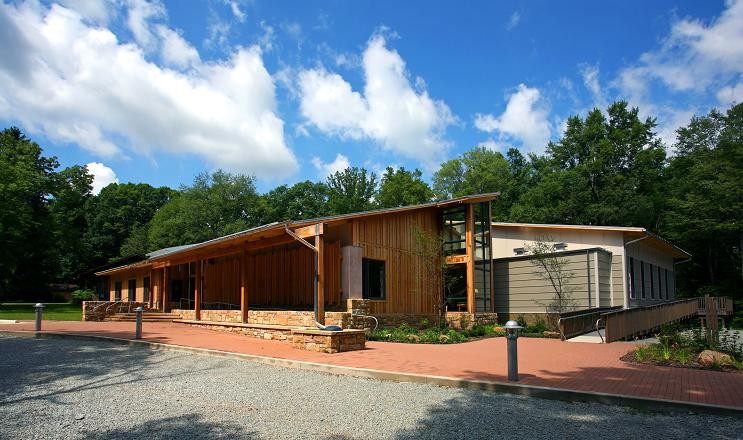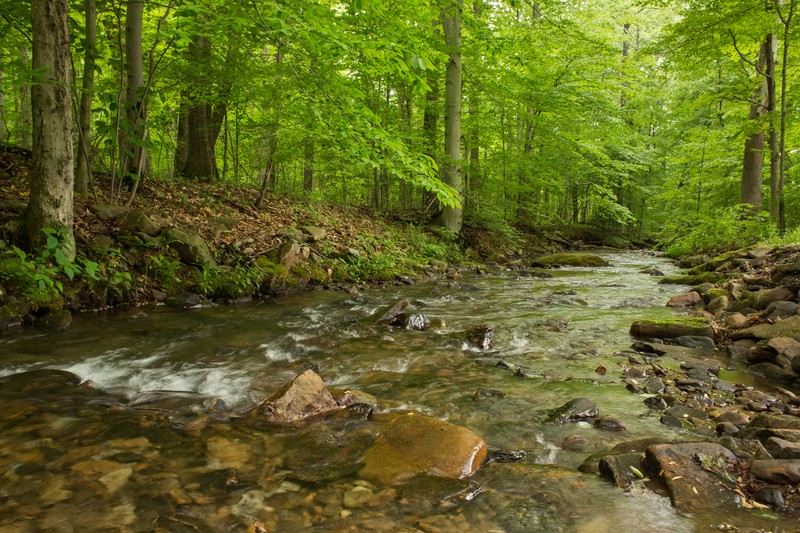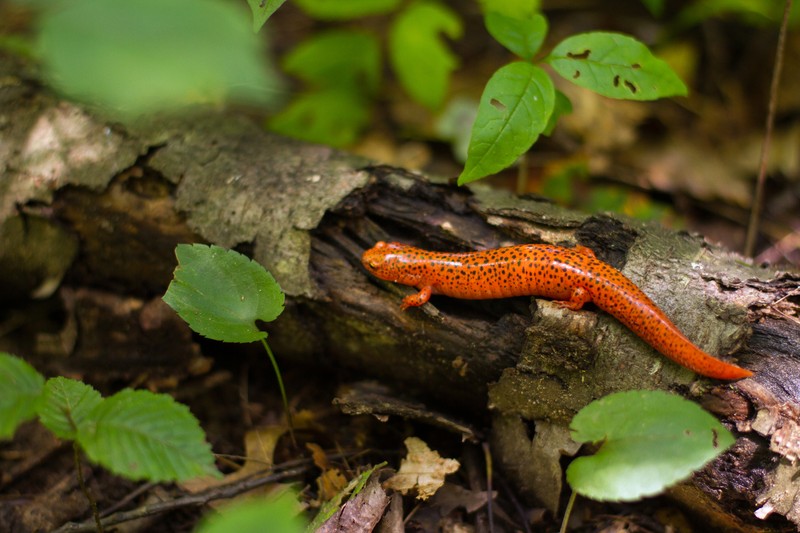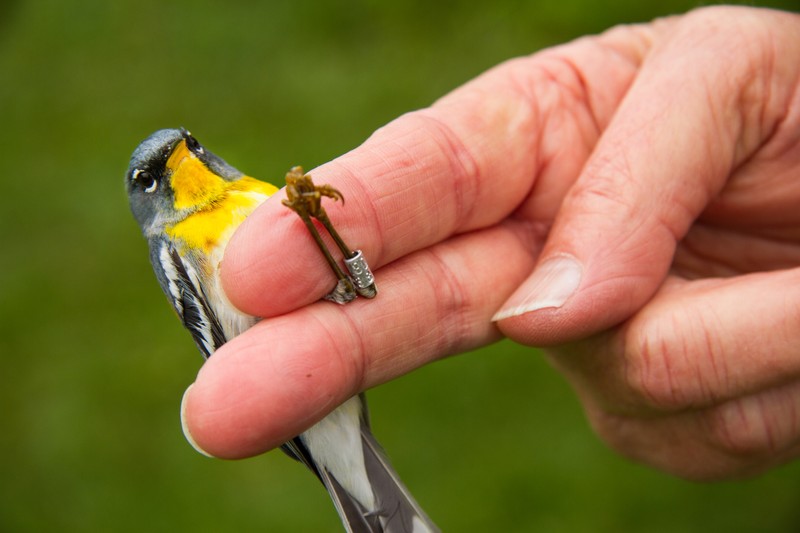Powdermill Nature Reserve
Introduction
Text-to-speech Audio
Images
Powdermill Nature Reserve's nature center is home to exhibits on Pennsylvania wildlife, bird research, freshwater streams, and water recycling, as well as classrooms and labs.

The nature reserve gets its name from Powdermill Run, a stream that is among the highest quality in the state. Photo by Pamela Curtin, PNR

Salamanders are a common find at Powdermill, where water sources and forest habitats are healthy. The red salamander is among the most striking. Photo by Pamela Curtin, PNR

At Powdermill Avian Research Center, a Northern Parula shows off its new "jewelry" - a small metal band with a identifying number. Bird banding data can track migration and changes in bird populations. Photo by Pamela Curtin, PNR

Backstory and Context
Text-to-speech Audio
Powdermill is a natural site that also has a human history. In the nineteenth century, the land at Powdermill was home to small communities, family farms, mines, and mills. Few traces of this history remain. Much of the original forest was logged in the early twentieth century, and one section was strip mined for coal. The modern forest is considered "second succession" because it regrew naturally after these events. Once acquired by the Carnegie Museum, staff rehabilitated some of the existing buildings on site into cabins, laboratories, a museum, and a nature center. Today's nature center was first built in 1983, after a fire destroyed the existing center and staff decided to replace the old museum. It was then expanded upon in 2007, integrating recycled materials and eco-friendly systems, such as the Marsh Machine, which uses greenhouse plants to filter water. Three trails, the Black Birch Trail, Sugar Camp Trail, and Porcupine Ridge, meander through the forest and are marked with interpretive trail signs.2
Scientists from a variety of disciplines visit Powdermill to better understand nature's processes, ranging from migration to reforestation to climate change. In 1961, Dr. Netting and ornithologist Robert Leberman established a permanent bird banding lab at Powdermill, where birds are safely collected, tagged by hand, and then released. Powdermill's dataset, now over fifty years old, provides an insightful and unprecedented look into changes in bird migration over time. The GIS Laboratory opened in 2006 to expand research capabilities using spatial technologies.3
Visitors can explore exhibits, attend programs, hike trails, enjoy gardens, and observe scientific research in action at public days or summer camps for children. Powdermill continues to embody the "living museum," a place where nature is studied and appreciated by all who visit.
Sources
2. Gangewere, Palace of Culture, 238.
3. Powdermill Avian Research Center, "History;" Gangewere, Palace of Culture, 239-240, 242.
Gangewere, Robert. Palace of Culture: Andrew Carnegie's Museums and Library in Pittsburgh. Pittsburgh: University of Pittsburgh Press, 2011.
Powdermill Avian Research Center. "History." Powdermill Nature Reserve. Carnegie Museum of Natural History. Accessed September 2017. http://www.powdermillarc.org
Powdermill Nature Reserve. "History." Powdermill Nature Reserve. Carnegie Museum of Natural History. Accessed September 2017. www.carnegiemnh.org/powdermill
